The main list of Easy-To-Grow Edible Flowers with Pictures: Edible flowers have been used for centuries, both raw and cooked.
Edible flowers may seem like a strange idea at first, but they are packed with plant nutrients known as phytochemicals, plus a range of vitamins and minerals.
Beginner Guide to Growing Edible Flowers
Best of all, you don’t always need a large garden to grow your own edible flowers. Some can be grown in container gardens, window ledges and window boxes. It’s a case of starting out with good seeds and soil, following instructions about watering, and using natural pest control methods as needed.
Here are some flowers which are perfect for beginners wanting to grow them and add them to recipes. When buying the seeds, always check for the Latin name to make sure you are getting an edible variety and not a potentially dangerous cousin.
1# Borage (Borago officinalis)
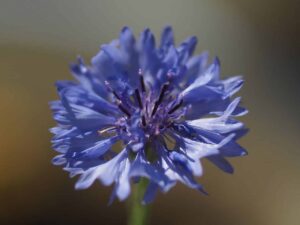
Borage, also known as a starflower, is an annual herb in the flowering plant family Boraginaceae. It is native to the Mediterranean region and has naturalized in many other locales.(Source: Wikipedia)
These star-shaped flowers come in pink, violet and blue, and taste slightly of cucumbers.Borage is popular in savory dishes like soups and stews.
You can also freeze the flowers in water to make ice cubes to add to summertime drinks for some extra refreshment.
It is an excellent dried herb to always keep on hand. It can be grown in any degree of sunlight, and pretty much any soil.
Check these organic Borage Seeds: Outsidepride Borage Herb Plant Flower Seed.
2# Chrysanthemums
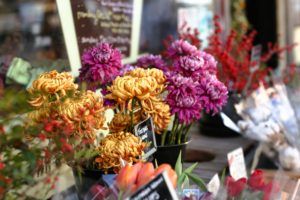
(Chrysanthemum morifolium, or Chrysanthemum x grandiflorum)
Chrysanthemums, sometimes called mums or chrysanths, are flowering plants of the genus Chrysanthemum in the family Asteraceae. They are native to Asia and northeastern Europe (Source: Wikipedia)
Mums taste the way they smell, slightly spicy and pungent. Use sparingly in salads, stir fries and rice dishes; a little usually goes a long way.
Mums need lots of sunlight and do well in most soils as long as they are well-drained.
3# Daylilies: Easy-To-Grow
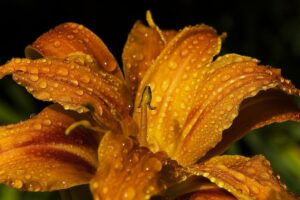
A daylily is a flowering plant in the genus Hemerocallis. Gardening enthusiasts and professional horticulturalists have long bred daylily species for their attractive flowers (source: Wikipedia)
These flowers taste sweet and floral.
They are best harvested when the buds are just about to open.
They are used in Asian cuisine, salads and desserts.
They thrive in the sun in moist soil which is well-drained.
4# Geraniums (Pelargonium)
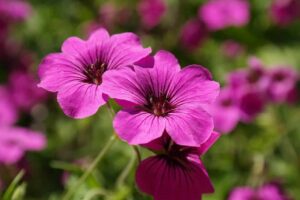
Geranium is a genus of 422 species of flowering annual, biennial, and perennial plants that are commonly known as the cranesbills.(Source: Wikipedia)
These can vary considerably in taste, from spicy nutmeg or ginger to citrus or peppermint. The lemon and peppermint-tasting varieties work well in ice cream, sorbet, and ice cubes.
Freeze these Easy-To-Grow Edible flowers and then use the cubes to liven up your pitchers or punch bowls.
Geraniums like light and well-drained soil.
5# Lavender (Lavandula)
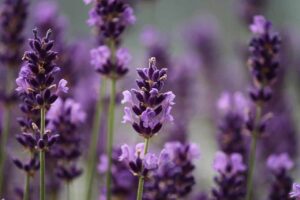
Lavandula is a genus of 47 known species of flowering plants in the mint family, Lamiaceae. It is native to the Old World and is found from Cape Verde and the Canary Islands, Europe across to northern (Source:Wikipedia)
Easy-To-Grow Edible Lavender has many uses around the home, including as parts of recipes. English lavender varieties (Lavender angustifolia) have the best flavor for recipes, which range from sweet to savory.
Lavender water, candy, sauces and dressings all have a light citrus taste with an underlying tang of rosemary and sage. Remove all the flowers from the stalk when cooking. These plants love sunlight and need well-drained soil.
6# Nasturtium
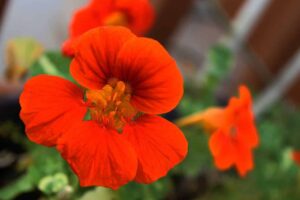
Tropaeolum, commonly known as nasturtium, is a genus of roughly 80 species of annual and perennial herbaceous flowering plants. It was named by Carl Linnaeus in his book Species Plantarum, and is the only genus in the family Tropaeolaceae’ (Source:Wikipedia)
Nasturium is the most popular of all edible flowers, and has been used for centuries as a component of salads and as an ingredient similar in taste to watercress. You can eat both the leaves and flowers.
They come in a wide range of colors, so work well as a contrasting color in salads and as a garnish. This plant thrives well in both sun and light shade.
7# Pansies
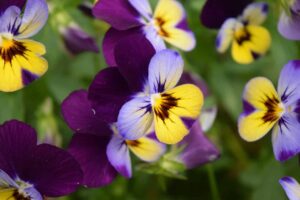
The garden pansy is a type of large-flowered hybrid plant cultivated as a garden flower. It is derived by hybridization from several species in the section Melanium of the genus Viola, particularly (Source:Wikipedia)
Pansies come in a range of colors and generally taste similar to grapes. The flowers are used for garnish, salads and cake decoration.
Pansies will grow well in anything except direct sunlight. The moisture levels will vary by the type of pansy, so read the seed packet carefully.
8# Easy-To-Grow Edible Flowers: Pinks
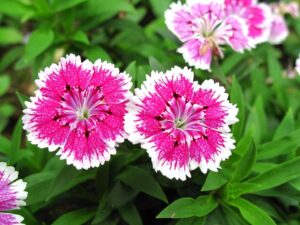
Dianthus flowers (Dianthus spp.) are also called pinks. They belong to a family of plants which includes carnations and are characterized by the spicy fragrance the blooms emit. Dianthus plants may be found as a hardy annual, biennial or perennial and most often used in borders or potted displays.(Source:Wikipedia)
Pinks have a delicate flavor with touch of cloves. They are popular as an addition to hot tea and cider. The flowers are also used as an attractive garnish for creamy soups, fruit salad, and cookie platters.
Easy-To-Grow Edible Pinks need a lot of sunlight and a very rich soil in order to thrive.
There are different species of pinks, so be sure to read the seed packet carefully.